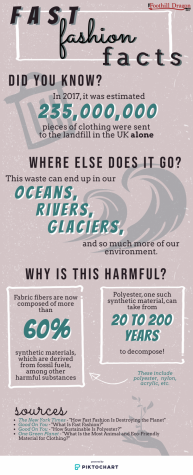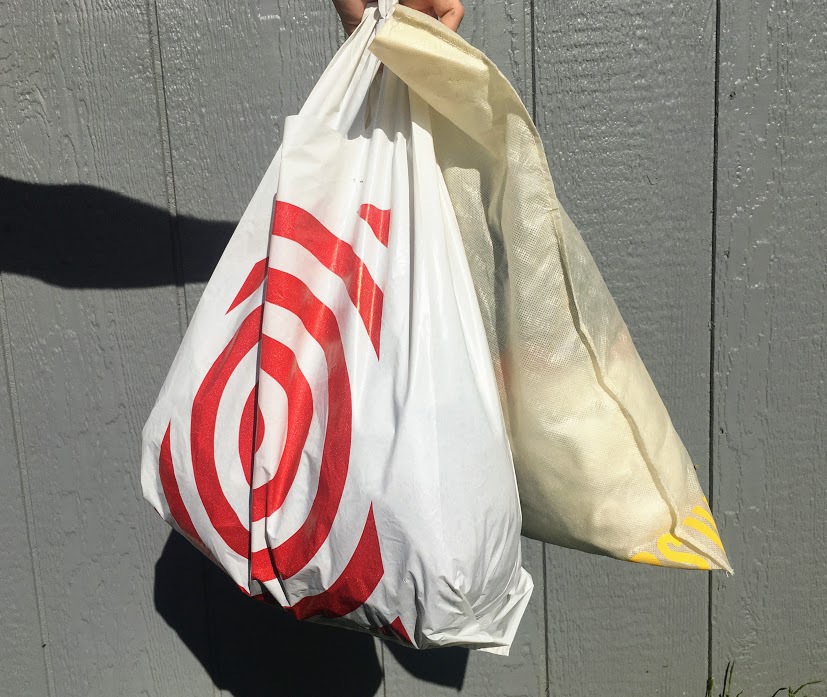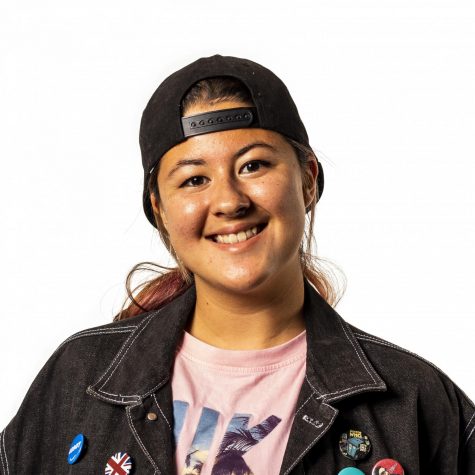Fast fashion: The terrible truth of the fashion industry
Brands such as Target and Urban Outfitters may provide reasonably priced clothing, but with an environmental and ethical impact.
May 25, 2020
Brilliantly colored clothing hangs innocently on the racks, and a favorite pop song plays quietly in the background. Hundreds of colors, styles and fabrics make it hard to choose just one thing, but the amazingly low prices ensure you don’t have to. After a quick encounter at the register, you’re on your way out, holding shopping bags overflowing with new clothes. The price tag may be cheap, but the real cost remains hidden: the destruction to our environment.
If money makes the world go round, then trends keep it spinning. New looks and colors are always going in and out of style, and it can be hard to keep up. A sense of permanent dissatisfaction guarantees consumers will be back for more, and so the economic wheel begins to turn again.
A word closely tied with trends is fast; fast fashion that is.
fast fash·ion
Noun
- inexpensive clothing produced rapidly by mass-market retailers in response to the latest trends.
New, trendy clothes so cheap that you can stay fashionable without breaking the bank – it sounds too good to be true, and it is.

There is a cost to fast fashion, and it’s a deadly one. The brilliant colors that catch your eye? Most of them are made from toxic dyes that poison waterways. The soft comfy fabric? It’s most likely made using cotton, which needs obscene amounts of water and pesticides to grow. Polyester is also a frequently used material created from pollutive fossil fuels.
It is important to be aware of the effects certain materials can have on the environment. The high demand for affordable fashion puts immense strain on ecosystems and the wildlife within them. Stretches of land are cleared to make way for cash crops like cotton, precious resources like water are spent to make these crops flourish and the land is overused from crop after crop, depleting its natural nutrients. These ecosystems are exposed daily to harmful pesticides filled with toxic chemicals like chlorpyrifos and acephate.
Animals are also affected due to fur farms, even when the need for real fur to stay warm is unnecessary in our day and age since new eco-friendly and warm material can be produced.
Trends change constantly, and whatever goes out of style is normally discarded. Landfills begin to overflow with clothing that will not decompose for years, and our earth thrives a little less. Not only does the environment suffer at the hands of fast fashion, but people do too. Fast fashion corporations order their materials and pieces overseas, mainly from third world countries. They do this because it’s cost-effective, but that low price is attached to one that’s immeasurably high – the price of a human life. Workers at clothing factories, many of them children, experience terrible working conditions while working long hours for very little pay.
So how can one tell if a brand produces harmful fast fashion? There are a few things that are signature marks of any fast fashion brand:
-having hundreds of styles
-always following the latest trends
-having new styles all the time
-making consumers feel pressured to buy their clothes with excessive advertising, emails, etc.
-having poor quality clothes that don’t last long, start to unravel after washing, etc.
-having unbelievably low prices
Many of the companies that consumers buy from each day have heinous backgrounds and are incredibly good at concealing them from the public. Some of these brands include Rip Curl, Urban Outfitters, Forever 21 and Hollister, along with countless others like them. Many consumers buy fast fashion because they are unaware of its consequences and because it’s incredibly affordable. However, what would happen if people stopped buying from these brands?
If the demand for sustainable clothing increased, it would cause these large fast fashion corporations to change their habits, or risk going out of business. There would be less waste and pollution, and the quality of clothing would be much better. Although the cost of clothing might rise slightly, the benefits would make up for it. Gone would be the days of constantly throwing out clothes because of rips and holes. Supporting sustainability would also lower child labor rates and shut down places with unsafe and unfair working conditions. Lastly, consumers would finally feel satisfied with their purchases, because there wouldn’t be any temptation to buy more.
The fashion industry is one with an appalling dark side that many ignore, but if consumers demand sustainability and eco-friendliness, it will begin to change into something worth supporting.
If you are looking for a way to make change, start by using your wallet. Here are some sustainable brands to check out – and don’t forget about thrifting!
















